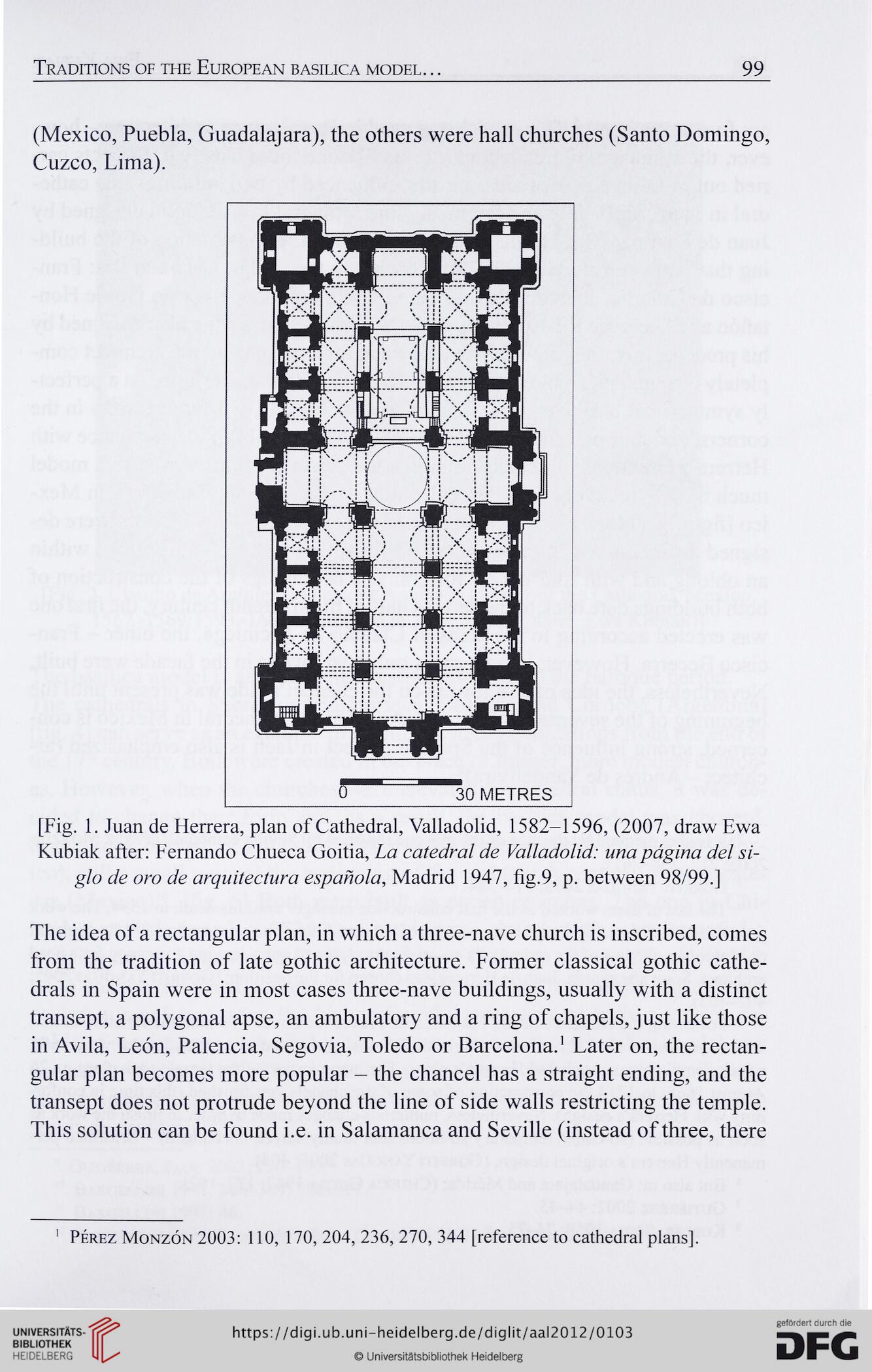Traditions of the European basilica model. ..
99
(Mexico, Puebla, Guadalajara), the others were hall churches (Santo Domingo,
Cuzco, Lima).
[Fig. 1. Juan de Herrera, plan of Cathedral, Valladolid, 1582-1596, (2007, draw Ewa
Kubiak after: Femando Chueca Goitia, La catedral de Valladolid: una página del si-
glo de oro de arquitectura española, Madrid 1947, fig.9, p. between 98/99.]
The idea of a rectangular plan, in which a three-nave church is inscribed, comes
from the tradition of late gothic architecture. Former classical gothic cathe-
drals in Spain were in most cases three-nave buildings, usually with a distinct
transept, a polygonal apse, an ambulatory and a ring of chapels, just like those
in Avila, León, Palencia, Segovia, Toledo or Barcelona.1 Later on, the rectan-
gular plan becomes more popular - the chancel has a straight ending, and the
transept does not protrude beyond the line of side walls restricting the temple.
This solution can be found i.e. in Salamanca and Seville (instead of three, there
' Pérez Monzón 2003: 110, 170, 204, 236, 270, 344 [reference to cathedral plans].
99
(Mexico, Puebla, Guadalajara), the others were hall churches (Santo Domingo,
Cuzco, Lima).
[Fig. 1. Juan de Herrera, plan of Cathedral, Valladolid, 1582-1596, (2007, draw Ewa
Kubiak after: Femando Chueca Goitia, La catedral de Valladolid: una página del si-
glo de oro de arquitectura española, Madrid 1947, fig.9, p. between 98/99.]
The idea of a rectangular plan, in which a three-nave church is inscribed, comes
from the tradition of late gothic architecture. Former classical gothic cathe-
drals in Spain were in most cases three-nave buildings, usually with a distinct
transept, a polygonal apse, an ambulatory and a ring of chapels, just like those
in Avila, León, Palencia, Segovia, Toledo or Barcelona.1 Later on, the rectan-
gular plan becomes more popular - the chancel has a straight ending, and the
transept does not protrude beyond the line of side walls restricting the temple.
This solution can be found i.e. in Salamanca and Seville (instead of three, there
' Pérez Monzón 2003: 110, 170, 204, 236, 270, 344 [reference to cathedral plans].




